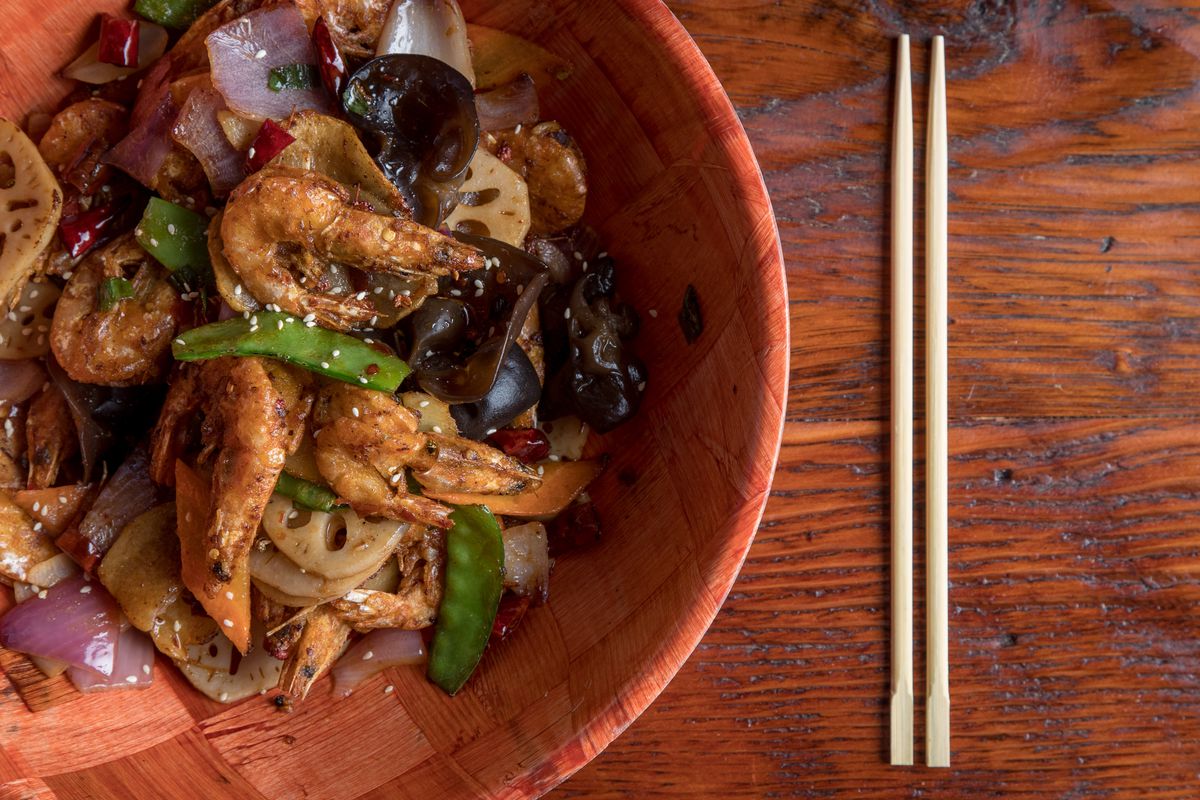

Articles
What Is Dry Hot Pot
Modified: February 20, 2024
Discover the delicious flavors of dry hot pot with our informative articles. Learn about the ingredients, spices, and techniques for creating this popular Chinese dish.
(Many of the links in this article redirect to a specific reviewed product. Your purchase of these products through affiliate links helps to generate commission for Storables.com, at no extra cost. Learn more)
Introduction
Dry hot pot, also known as “ma la xiang guo” in Chinese, is a popular dish that originated from Sichuan province in China. It is a unique and flavorful dish that combines the spiciness of Sichuan cuisine with a wide variety of ingredients. Dry hot pot has gained popularity not only in China but also globally, with many restaurants offering their own versions of this delicious dish.
The term “dry hot pot” can be a bit misleading, as it is not actually cooked without any liquid. Instead, it refers to a cooking style where the ingredients are stir-fried in a wok with a special blend of spices and seasonings, creating a rich and aromatic flavor. The dish typically includes a combination of meats, vegetables, mushrooms, tofu, and occasionally seafood or noodles, making it a versatile and satisfying meal.
The hallmark of dry hot pot is its characteristic numbing and spicy flavor, which comes from the generous use of Sichuan peppercorns and chili peppers. The numbing sensation, known as “ma,” and the spiciness, known as “la,” are the defining characteristics of Sichuan cuisine. These two sensations create a unique and addictive taste that keeps people coming back for more.
The history of dry hot pot can be traced back to the street food culture in Sichuan province. It was initially served as a snack in small food stalls or street markets, but its popularity quickly spread and it became a staple in many restaurants. Over time, dry hot pot evolved and gained recognition as a standalone dish, with different variations and regional adaptations.
As dry hot pot gained fame, it started to make its way into menus in other parts of China and eventually around the world. Today, you can find dry hot pot restaurants in many major cities, offering a wide range of ingredient options and customizable spice levels to cater to different palates.
In the next sections, we will explore the history, ingredients, cooking techniques, regional variations, health benefits, and tips for making dry hot pot at home. Whether you are a fan of spicy food or just looking to try something new, dry hot pot is a culinary adventure worth embarking on.
Key Takeaways:
- Dry hot pot, originating from Sichuan, China, offers a customizable and flavorful dining experience with its diverse ingredients and health benefits, making it a culinary adventure worth embarking on.
- The dish’s rich history, regional variations, and popular restaurants worldwide showcase the widespread appeal of dry hot pot, promising a vibrant and memorable dining experience for spice enthusiasts and food lovers alike.
Read more: What Is A Hot Pot?
History of Dry Hot Pot
The origins of dry hot pot can be traced back to Sichuan province in China, specifically to the city of Chongqing. This southwestern Chinese region is renowned for its bold and spicy flavors, and dry hot pot is one of its most popular dishes.
The exact beginnings of dry hot pot are unclear, but it is believed to have emerged as a street food snack sold by small food vendors. These vendors would set up their stalls in bustling markets or on busy street corners, attracting locals and visitors alike with the enticing aromas of their sizzling woks.
The popularity of dry hot pot grew rapidly within Sichuan, gaining a strong following among locals who were captivated by its fiery and numbing flavors. As demand increased, restaurants began offering dry hot pot on their menus, elevating it from a humble street food to a sought-after dish in traditional dining establishments.
Over time, dry hot pot spread beyond the borders of Sichuan and gained popularity in other regions of China. People were drawn to its complex flavors and the customizable nature of the dish, allowing them to choose their desired ingredients and spice levels.
With the rise of Chinese cuisine’s global popularity, dry hot pot started gaining attention on an international scale. It began appearing on menus in Chinese restaurants around the world, introducing people from different cultures to the unique flavors of Sichuan cuisine.
Today, dry hot pot has become a staple in many Chinese restaurants, not only in China but also in Chinese communities abroad. It has also inspired creative adaptations and variations in other countries, where chefs incorporate local ingredients and flavors to put their own spin on the dish.
The rise of dry hot pot has been fueled by its ability to satisfy a wide range of dietary preferences and restrictions. Vegetarians, for example, can enjoy a meat-free version by opting for tofu, mushrooms, and an array of vegetables. Seafood lovers can indulge in a seafood-based dry hot pot with prawns, squid, and fish.
Despite its evolution and growing popularity, the essence of dry hot pot remains rooted in its bold and fiery flavors. It continues to be a favorite among those who crave the unique combination of spiciness and numbing sensation that Sichuan cuisine is renowned for.
In the next sections, we will explore the key ingredients used in dry hot pot and the cooking techniques that bring out its distinctive flavors.
Ingredients Used in Dry Hot Pot
Dry hot pot is known for its abundance of ingredients, which come together to create a flavorful and satisfying meal. The dish offers a wide variety of options, allowing diners to customize their hot pot experience according to their preferences.
Here are some commonly used ingredients in dry hot pot:
- Meats: Typically, dry hot pot includes a selection of meats such as thinly sliced beef, lamb, chicken, or pork. These protein options add savory flavors and texture to the dish.
- Seafood: Seafood lovers can enjoy dry hot pot with the addition of prawns, squid, fish, or even crab. These seafood options complement the spice and add a delightful oceanic taste.
- Tofu and Soy Products: Soft tofu, firm tofu, tofu skin, and other soy products are commonly used in dry hot pot. They provide a vegetarian-friendly protein option and soak up the flavors of the spices and seasonings.
- Mushrooms: Various mushrooms, such as shiitake, enoki, and oyster mushrooms, bring earthy flavors and add a wonderful contrast of textures to the dish.
- Vegetables: A wide array of vegetables can be included in dry hot pot, such as leafy greens like spinach and bok choy, bean sprouts, cabbage, bell peppers, and mushrooms. These vegetables not only provide freshness but also balance out the spiciness of the dish.
- Noodles: Some versions of dry hot pot also include noodles, such as glass noodles or wheat noodles, which soak up the flavorful broth and add a satisfying chewiness.
In addition to the main ingredients, dry hot pot is seasoned with a blend of spices and sauces, which contribute to its distinct flavor profile. The most prominent flavors come from the generous use of Sichuan peppercorns, chili peppers, garlic, ginger, Chinese five-spice, and a variety of sauces like soy sauce, oyster sauce, and sesame oil.
It’s worth noting that the selection of ingredients in dry hot pot is highly customizable. Diners can choose their preferred combination of proteins, vegetables, and spices, allowing for endless possibilities and catering to different dietary preferences and restrictions.
The art of balancing flavors is key in creating a delicious dry hot pot. The combination of savory meats, fresh seafood, umami-rich mushrooms, and vibrant vegetables all come together to create a harmonious and satisfying dish.
Next, let’s explore the cooking techniques that make dry hot pot a unique and flavorful experience.
Cooking Techniques for Dry Hot Pot
Dry hot pot is prepared using a combination of stir-frying and dry cooking techniques, resulting in a deliciously flavored dish that is both aromatic and satisfying.
Here are the key cooking techniques used to create dry hot pot:
- Preparation: Before cooking, all the ingredients for dry hot pot are meticulously washed, sliced, and prepared. This includes thinly slicing meats, marinating them, and cutting vegetables into bite-sized pieces for easy cooking.
- Heating the Wok: A traditional wok is used to cook dry hot pot. It is first heated over high heat to create a hot cooking surface, allowing the ingredients to be quickly and evenly cooked.
- Stir-frying: The stir-frying technique is employed to cook the ingredients in dry hot pot. The meats are usually added to the wok first and stir-fried until they are browned and cooked through. Then, the vegetables, mushrooms, and other ingredients are added and stir-fried together. This high-heat cooking method ensures that the ingredients retain their crispness and flavors.
- Customizing Spice Level: Dry hot pot gets its signature spice from a blend of Sichuan peppercorns and chili peppers. The amount of these spices can be adjusted according to personal preference. If you prefer a milder flavor, you can reduce the amount of chili peppers or use milder variations. Conversely, if you enjoy a fiery punch, you can add extra chili peppers or opt for spicier varieties.
- Infusing Flavors: As the ingredients are stir-fried, the spices and seasonings are added to infuse the dish with their distinctive flavors. Sichuan peppercorns give the dish a numbing sensation while chili peppers provide the heat. Additionally, garlic, ginger, Chinese five-spice, and various sauces are added to enhance the overall taste. The dry heat of the wok intensifies the flavors, resulting in a rich and aromatic broth.
- Serving: Once all the ingredients are cooked to perfection, the dry hot pot is transferred to a serving plate or bowl. It is typically garnished with fresh herbs, such as cilantro or green onions, for added freshness and visual appeal.
The beauty of dry hot pot lies in its simplicity and versatility. You can adapt the cooking techniques and spice levels to suit your taste preferences. Whether you prefer a mild and fragrant dry hot pot or a tongue-tingling spicy version, the cooking techniques allow for customization and experimentation.
Now that we’ve explored the cooking techniques, let’s delve into the regional variations of dry hot pot.
Regional Variations of Dry Hot Pot
Dry hot pot has become a popular dish throughout China and has given rise to various regional variations. Each region puts its own unique twist on the dish, incorporating local ingredients and flavors to create distinct and delicious versions of dry hot pot.
Here are some notable regional variations of dry hot pot:
- Sichuan Dry Hot Pot: As the birthplace of dry hot pot, Sichuan offers the most authentic and traditional version of the dish. Known for its bold and spicy flavors, Sichuan dry hot pot features a heavy use of Sichuan peppercorns, chili peppers, and garlic. It is known for its intense heat and numbing sensation, making it a favorite among spice enthusiasts.
- Chongqing Dry Hot Pot: This variation originated in Chongqing, a municipality in Sichuan. Chongqing dry hot pot is characterized by its fiery and aromatic broth, which is made by simmering a variety of spices and chili peppers. It commonly includes ingredients like beef, tripe, lotus root, and potato slices.
- Yunnan Dry Hot Pot: In the neighboring province of Yunnan, dry hot pot takes on a milder and more fragrant profile compared to its Sichuan counterpart. It features a combination of fresh herbs, Yunnan spices, and local ingredients such as wild mushrooms, preserved ham, and dried tofu. Yunnan dry hot pot is known for its light yet flavorful broth.
- Guizhou Dry Hot Pot: Guizhou province offers a unique variation of dry hot pot that showcases the region’s diverse flavors. Guizhou dry hot pot is often spiced with fermented black beans, pickled vegetables, and local herbs. It features an assortment of meats, including pork belly, chicken, and duck along with vegetables like bamboo shoots and potatoes.
- Beijing Dry Hot Pot: In the capital city of Beijing, dry hot pot often takes on a more international twist. It incorporates a wide variety of proteins like lamb, beef, and seafood. Beijing dry hot pot is known for its savory and aromatic flavors, with the addition of ingredients like fermented soybean paste and soy sauce.
These are just a few examples of the regional variations of dry hot pot found in China. Each region brings its own unique flavors and local ingredients to create distinct interpretations of this beloved dish. Whether you prefer the fiery and numbing heat of Sichuan or the fragrant and mild flavors of Yunnan, exploring the different regional variations of dry hot pot can be a delightful culinary journey.
Now that we’ve explored the regional variations, let’s move on to the health benefits of enjoying dry hot pot.
Dry hot pot is a popular Chinese dish that consists of a variety of meats, vegetables, and tofu stir-fried with a spicy and flavorful seasoning. To make your own dry hot pot at home, be sure to use a combination of Sichuan peppercorns, dried chilies, and other aromatic spices for an authentic flavor.
Read more: What To Put Into Hot Pot
Health Benefits of Dry Hot Pot
Dry hot pot not only offers a satisfying and flavorful dining experience but also provides several health benefits due to its diverse and nutritious ingredients.
Here are some of the health benefits of enjoying dry hot pot:
- Rich in Protein: Dry hot pot typically includes a variety of meats, seafood, and tofu, making it a good source of protein. Protein is essential for building and repairing tissues, supporting muscle growth, and maintaining overall health.
- Abundance of Vegetables: Dry hot pot is often loaded with an assortment of vegetables, such as leafy greens, mushrooms, and bell peppers. These vegetables are rich in vitamins, minerals, and fiber, which are beneficial for digestion, immune function, and overall well-being.
- Spices with Health Benefits: The spices used in dry hot pot, such as Sichuan peppercorns, garlic, and ginger, have various health benefits. Sichuan peppercorns are known to aid digestion and promote gastrointestinal health, while garlic and ginger have anti-inflammatory and immune-boosting properties.
- Controlled Spice Levels: One of the key advantages of dry hot pot is the ability to customize the spice levels. By adjusting the amount of chili peppers and Sichuan peppercorns, individuals can control the spice and heat according to their tolerance and preference.
- Possible Weight Management: Dry hot pot can be a healthier alternative to other high-calorie dishes, such as deep-fried or heavily sauced options. The use of lean meats, seafood, and an abundance of vegetables can help promote satiety while reducing calorie intake.
- Versatile for Dietary Needs: Dry hot pot can easily accommodate different dietary preferences, including vegetarian and gluten-free options. With a wide variety of ingredient choices, it allows individuals to tailor the dish to meet their specific dietary needs and restrictions.
It’s important to note that while dry hot pot has several health benefits, it’s also essential to maintain a balanced diet and portion control. Moderation is key as the spices and seasonings used in dry hot pot can be high in sodium and should be consumed in moderation for individuals with specific dietary restrictions or health concerns.
With its nutritious ingredients and customizable spice levels, dry hot pot offers a delicious and health-conscious dining option that can be enjoyed by individuals of all dietary backgrounds.
Now, let’s move on to some tips for making dry hot pot at home.
Tips for Making Dry Hot Pot at Home
Creating your own dry hot pot at home can be a fun and rewarding culinary experience. Here are some tips to help you achieve a delicious and authentic dry hot pot:
- Select Fresh and Quality Ingredients: Choose fresh and high-quality ingredients for your dry hot pot. Opt for vegetables that are crisp and vibrant, and select meats that are well-marbled and tender. This will ensure that the flavors are at their best.
- Prepare Ingredients in Advance: Prepping your ingredients ahead of time can help streamline the cooking process. Thinly slice the meats, chop the vegetables, and marinate any proteins to maximize flavor absorption.
- Balance Flavors: Achieving a well-balanced flavor profile is crucial in dry hot pot. Use a combination of Sichuan peppercorns, chili peppers, garlic, ginger, and other spices to create a harmonious blend of heat, numbing sensations, and aromatics.
- Customize Spice Levels: Adjust the amount of chili peppers and Sichuan peppercorns to suit your spice tolerance. Start with a milder amount and gradually increase it to enhance the heat and numbing sensation according to your preference.
- Stir-Fry in Small Batches: To ensure that each ingredient is properly cooked and retains its texture, stir-fry in small batches. Overcrowding the wok can lead to uneven cooking and loss of crunchiness.
- Use a Seasoned Wok: A well-seasoned wok can enhance the flavor and prevent ingredients from sticking. Make sure your wok is properly seasoned or seasoned it before cooking your dry hot pot.
- Include a Variety of Ingredients: Experiment with an array of ingredients to add depth and texture to your dry hot pot. Combine different meats, seafood, mushrooms, tofu, and vegetables to create a diverse and flavorful hot pot experience.
- Don’t Forget Condiments: Serve your dry hot pot with a variety of condiments to enhance the flavors. Common condiments include soy sauce, sesame oil, chili oil, and cilantro. Let each person customize their hot pot by adding their preferred condiments.
- Enjoy the Experience: Dry hot pot is not only about the end result but also the experience of gathering around the table and enjoying a communal meal. Encourage your guests to participate in the cooking process and savor the flavors together.
By following these tips, you can create a flavorful and personalized dry hot pot experience in the comfort of your own home. Don’t be afraid to experiment with ingredients and spice levels to make it your own.
Now that you have the knowledge and techniques, it’s time to explore some popular dry hot pot restaurants where you can indulge in this delectable dish.
Popular Dry Hot Pot Restaurants
Dry hot pot has gained immense popularity worldwide, and many restaurants specialize in serving this tantalizing dish. Whether you’re looking to experience authentic Sichuan flavors or explore creative variations, here are some popular dry hot pot restaurants worth checking out:
- Haidilao: Haidilao is a renowned hot pot chain originating from Sichuan, China. It is famous for its exceptional service, high-quality ingredients, and a wide range of hot pot options, including dry hot pot. With locations worldwide, Haidilao offers a memorable dining experience for dry hot pot enthusiasts.
- Little Sheep Mongolian Hot Pot: Little Sheep is a well-known chain that specializes in Mongolian-style hot pot, including dry hot pot. Originating from Inner Mongolia, China, their dry hot pot features an array of spices and a wide selection of high-quality ingredients, such as thinly sliced meats, fresh vegetables, and flavorful broths.
- Xiabu Xiabu: Xiabu Xiabu is a popular hot pot chain in China that serves an extensive range of hot pot dishes, including dry hot pot. They offer a variety of ingredients and customizable options, allowing diners to create their own unique dry hot pot experience.
- Mala Project: With locations in New York City and beyond, Mala Project offers a modern and innovative take on dry hot pot. They showcase a wide variety of premium ingredients, including vegetarian options, and allow customers to customize their spice levels to cater to different preferences.
- Three Shabu: Located in Los Angeles, Three Shabu serves delicious dry hot pot with a focus on quality and authenticity. They provide a wide selection of meats, seafood, and vegetables, as well as various homemade sauces to enhance the flavors of the dish.
- Dazzling Café: Dazzling Café, with locations in Taiwan, Hong Kong, and Singapore, offers a unique and fashionable twist on dry hot pot. Combining elements of style and culinary creativity, they present an array of visually stunning and delectable dry hot pot options.
These are just a few examples of popular dry hot pot restaurants that have gained recognition for their exceptional flavors and dining experiences. However, dry hot pot restaurants can be found in many cities around the world, so be sure to explore local options and immerse yourself in the vibrant and flavorful world of dry hot pot.
Now that we’ve explored the popular dry hot pot restaurants, let’s conclude our journey through the world of dry hot pot.
Conclusion
Dry hot pot, with its bold flavors and diverse range of ingredients, has captivated the palates of people all over the world. Originating from Sichuan province in China, this dish has evolved and adapted to various regional variations, each showcasing unique flavors and ingredients.
As we’ve discovered, dry hot pot is not just a delicious meal but also offers several health benefits. Packed with protein, fiber-rich vegetables, and an array of spices, dry hot pot can be a nutritious and satisfying dining option. Additionally, the customizable spice levels make it suitable for different taste preferences and dietary needs.
Whether you choose to visit popular dry hot pot restaurants or embark on a culinary adventure at home, mastering the art of dry hot pot involves balancing flavors, selecting quality ingredients, and utilizing proper cooking techniques. With these tips and techniques in mind, you can create your own flavorful and memorable dry hot pot experience.
From the traditional flavors of Sichuan dry hot pot to the fragrant variations in Yunnan and the creative interpretations found in popular restaurants, there’s a dry hot pot for every palate. Whether you enjoy intense spiciness or milder flavors, dry hot pot is a culinary journey that can delight and satisfy your taste buds.
So, the next time you’re looking for a vibrant and flavorful dining experience, consider exploring the world of dry hot pot. Whether you’re enjoying it with friends and family at a local restaurant or experimenting with your own creations in the kitchen, dry hot pot promises a memorable dining experience that will leave you craving more.
Indulge in the numbing and fiery sensation of Sichuan peppercorns, savor the diverse flavors of fresh ingredients, and immerse yourself in the rich and aromatic broth of dry hot pot. Explore the regional variations, try new ingredients, and let your taste buds embark on a tantalizing journey through the world of this beloved dish.
So, gather your loved ones, prepare the ingredients, and embark on a culinary adventure with dry hot pot – a dish that brings people together through its flavors, aromas, and shared experience.
Frequently Asked Questions about What Is Dry Hot Pot
Was this page helpful?
At Storables.com, we guarantee accurate and reliable information. Our content, validated by Expert Board Contributors, is crafted following stringent Editorial Policies. We're committed to providing you with well-researched, expert-backed insights for all your informational needs.
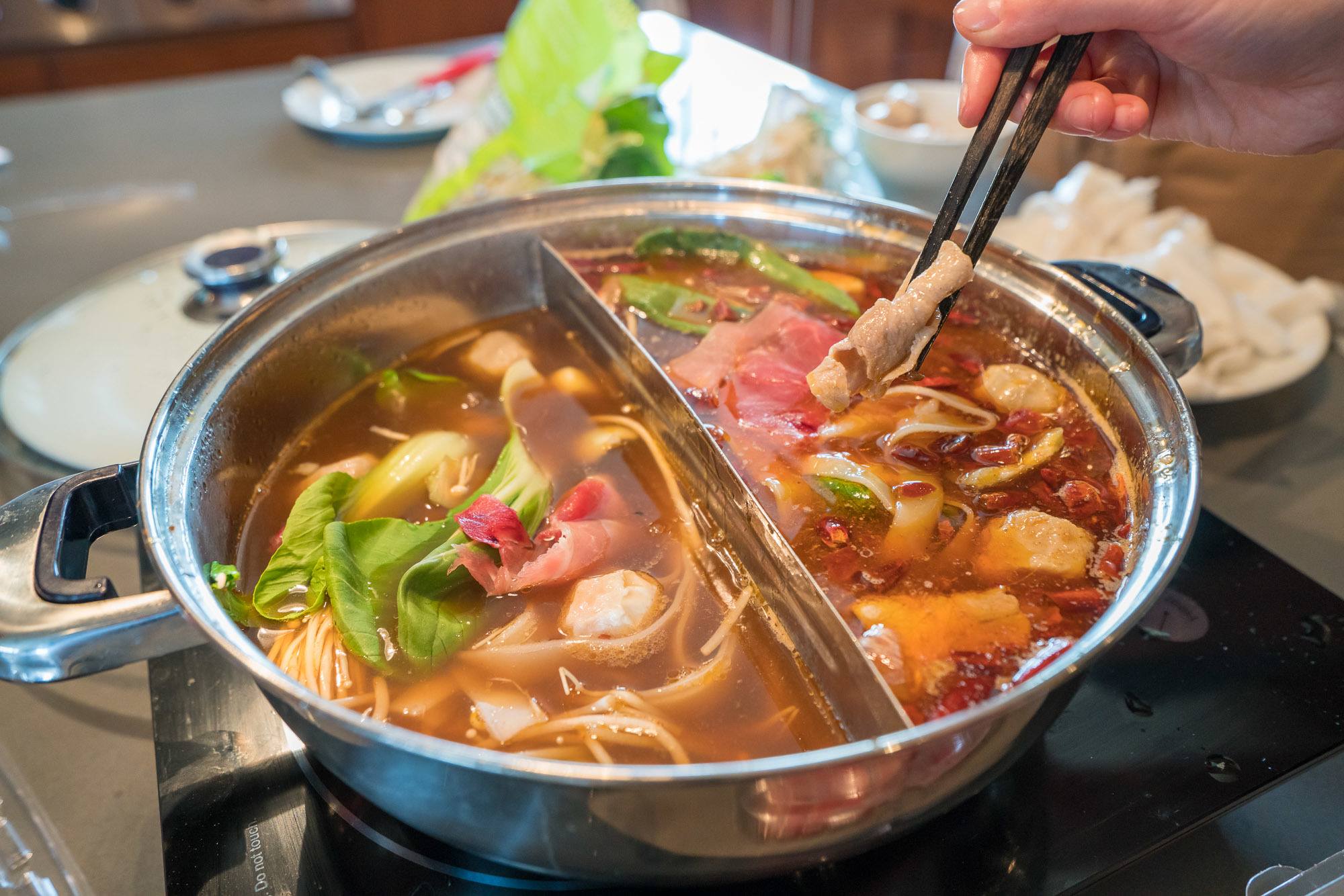
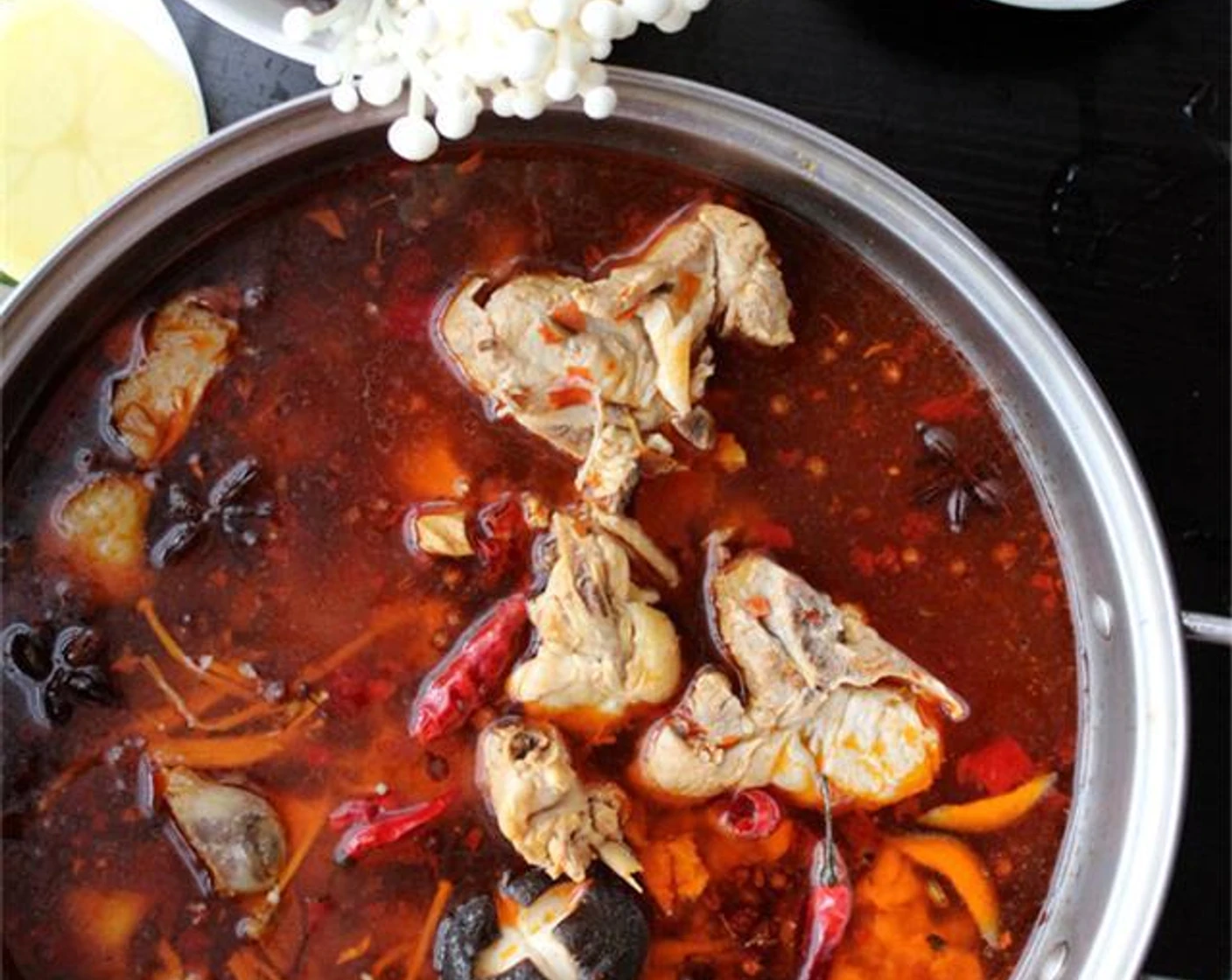
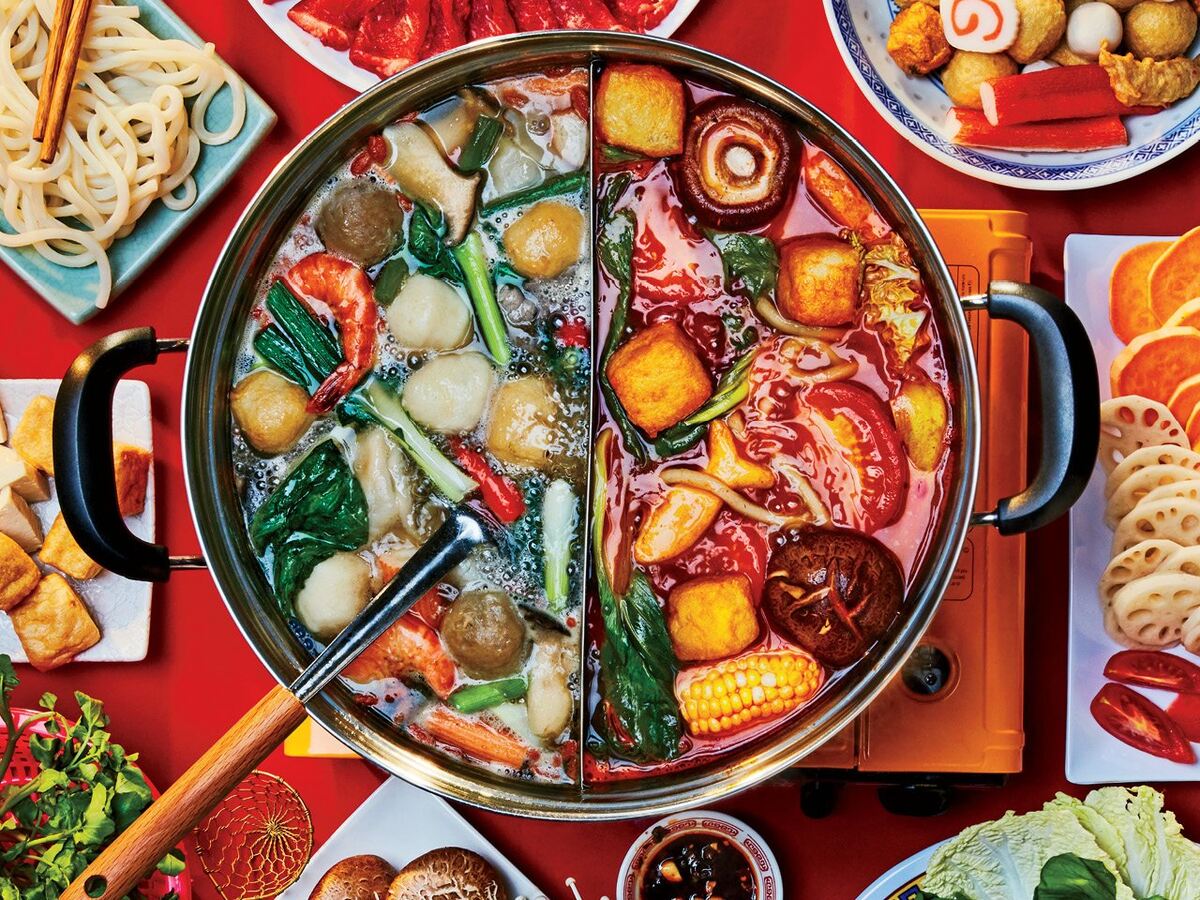
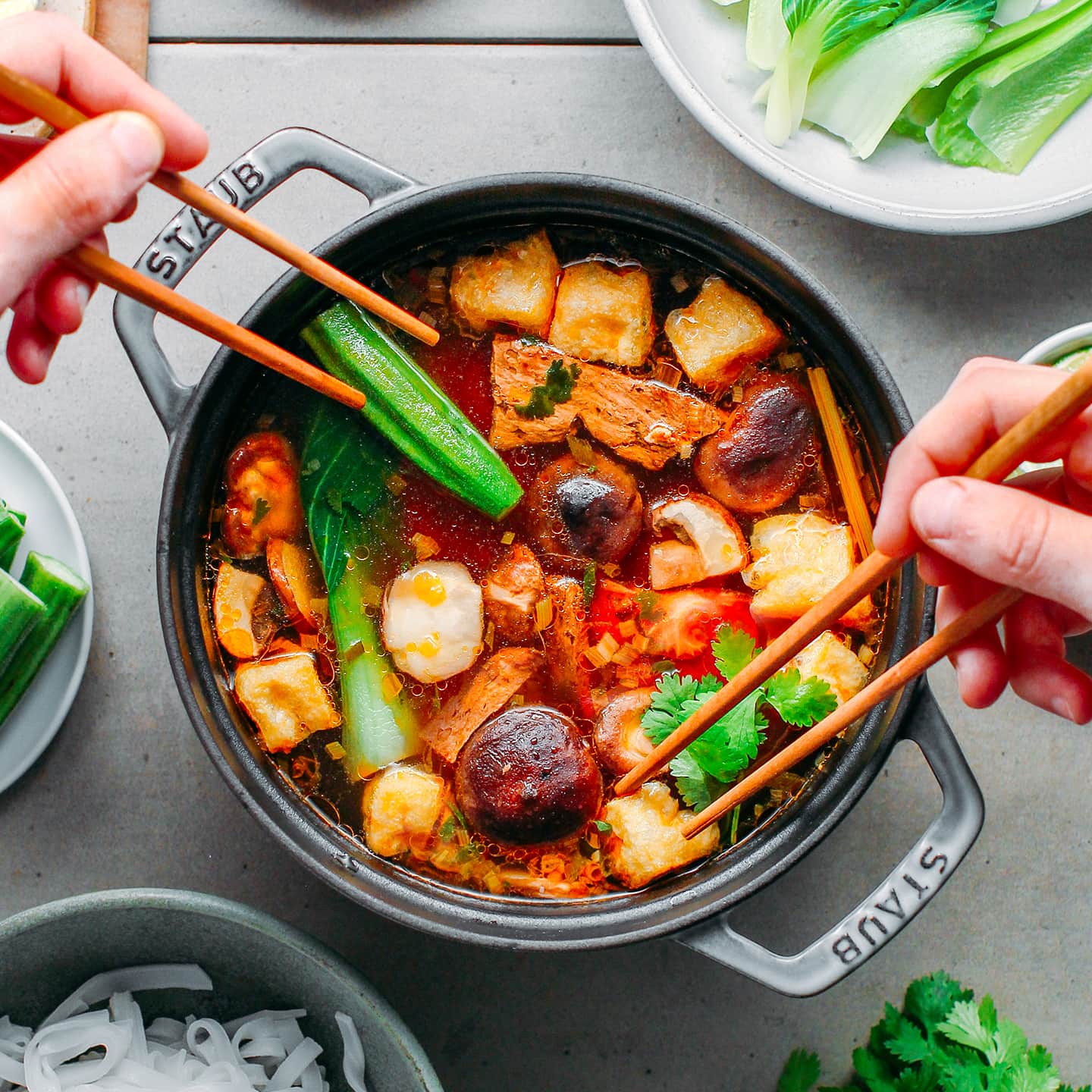
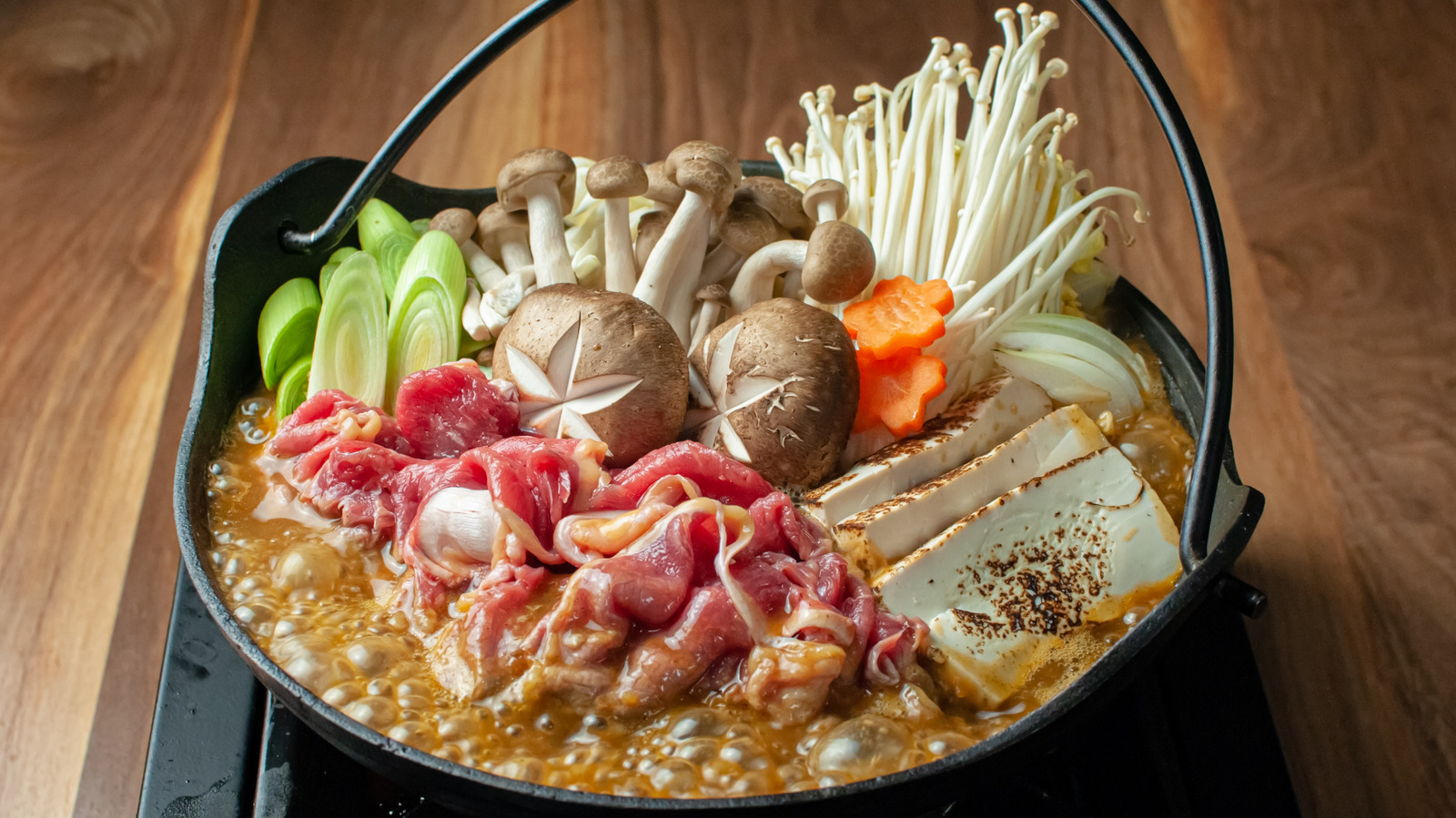

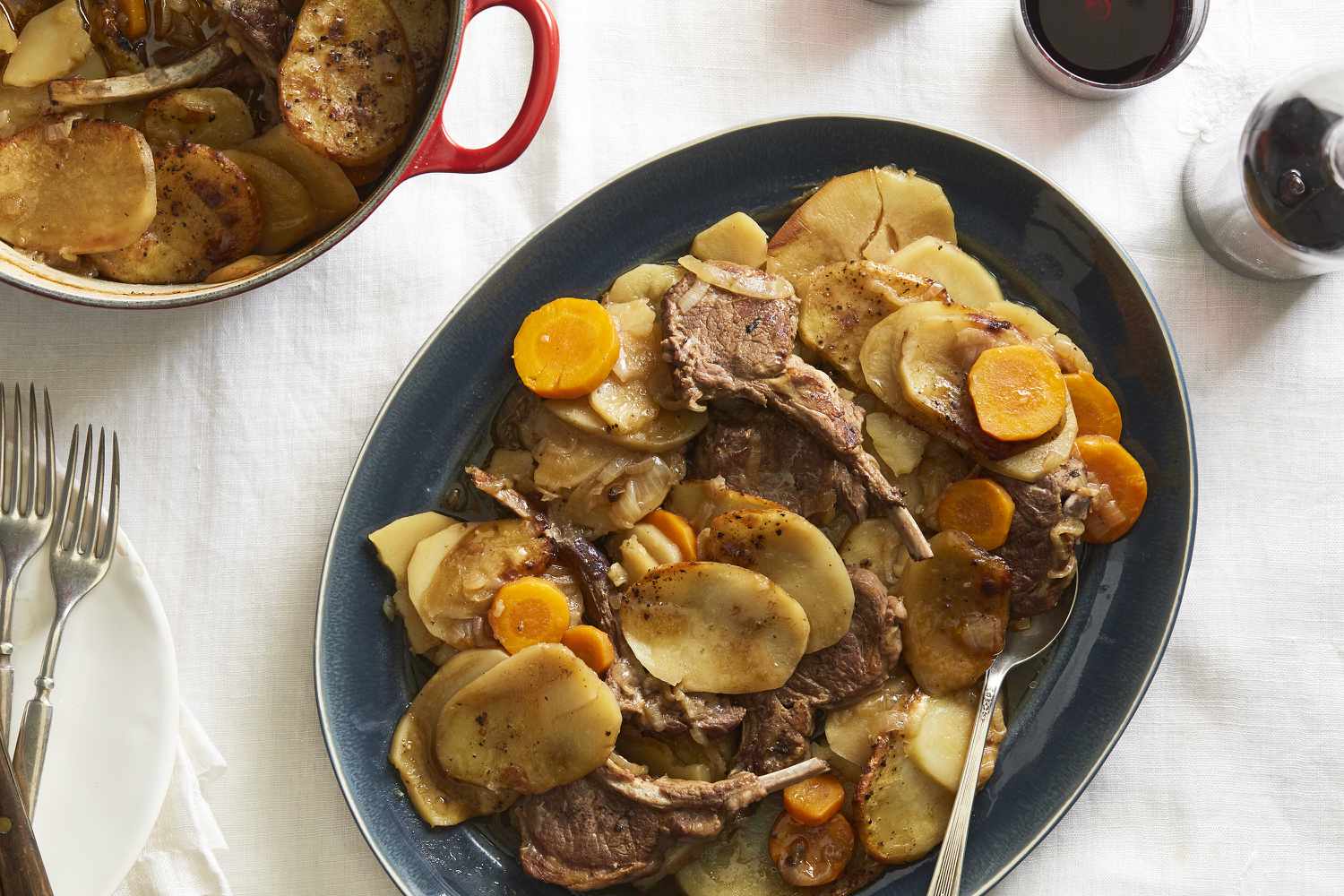
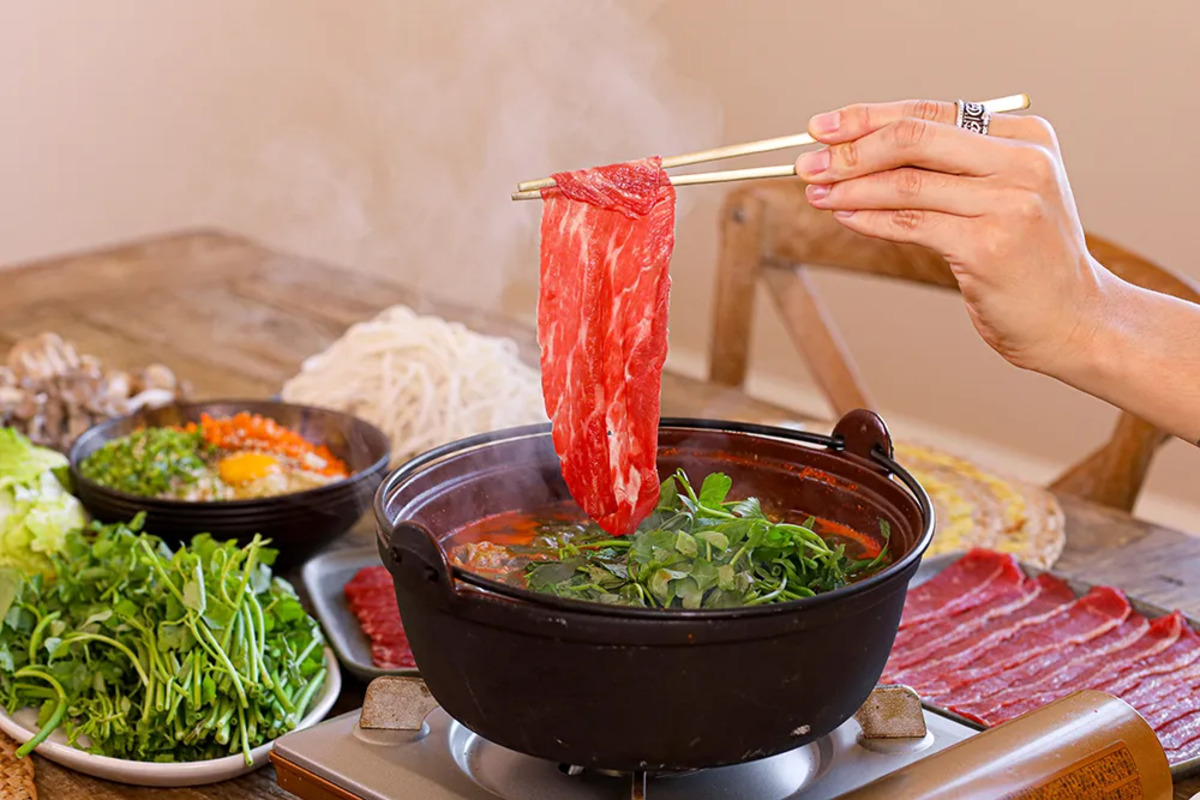
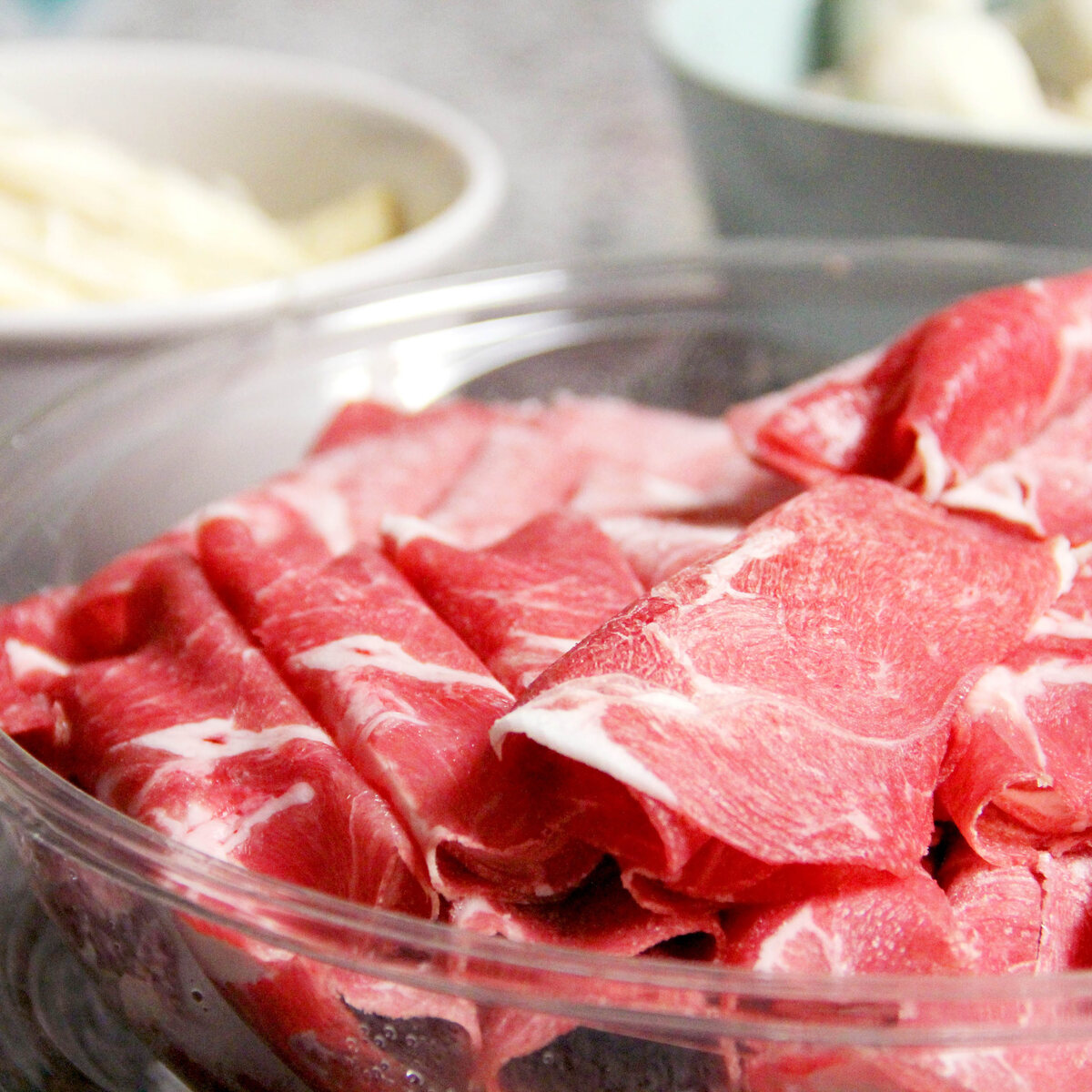
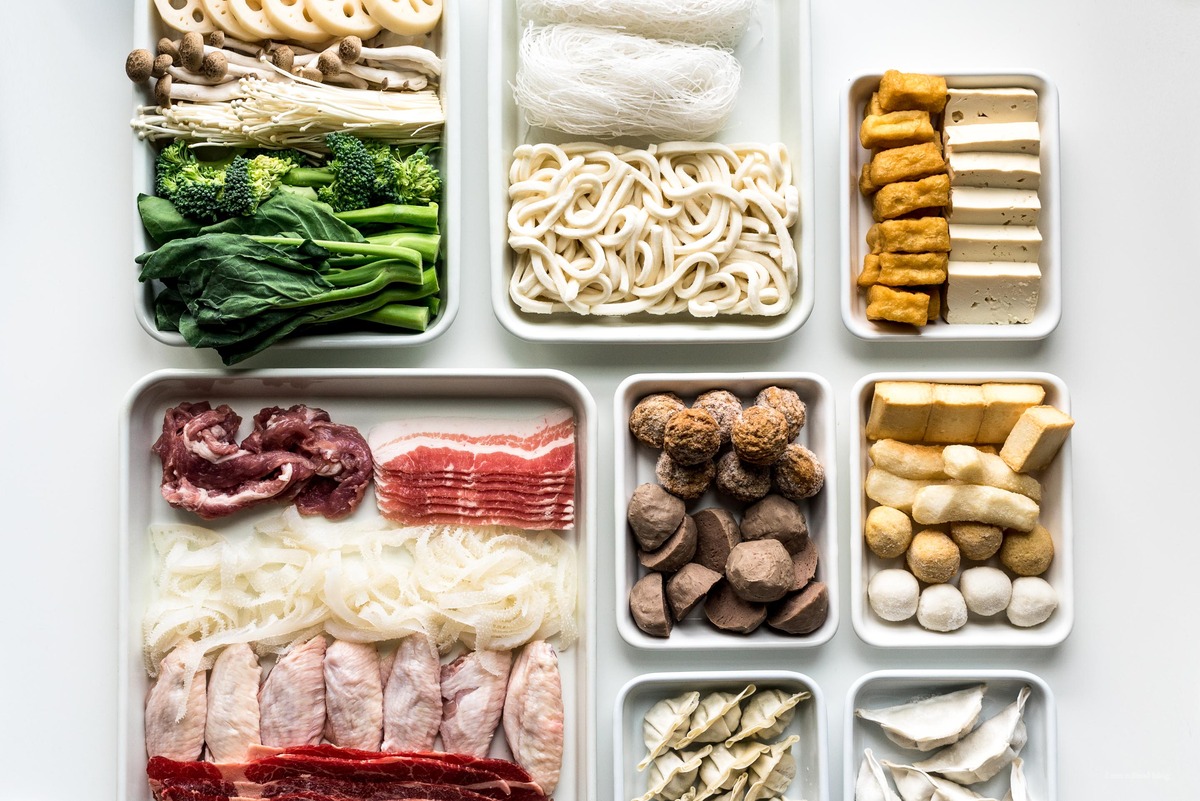
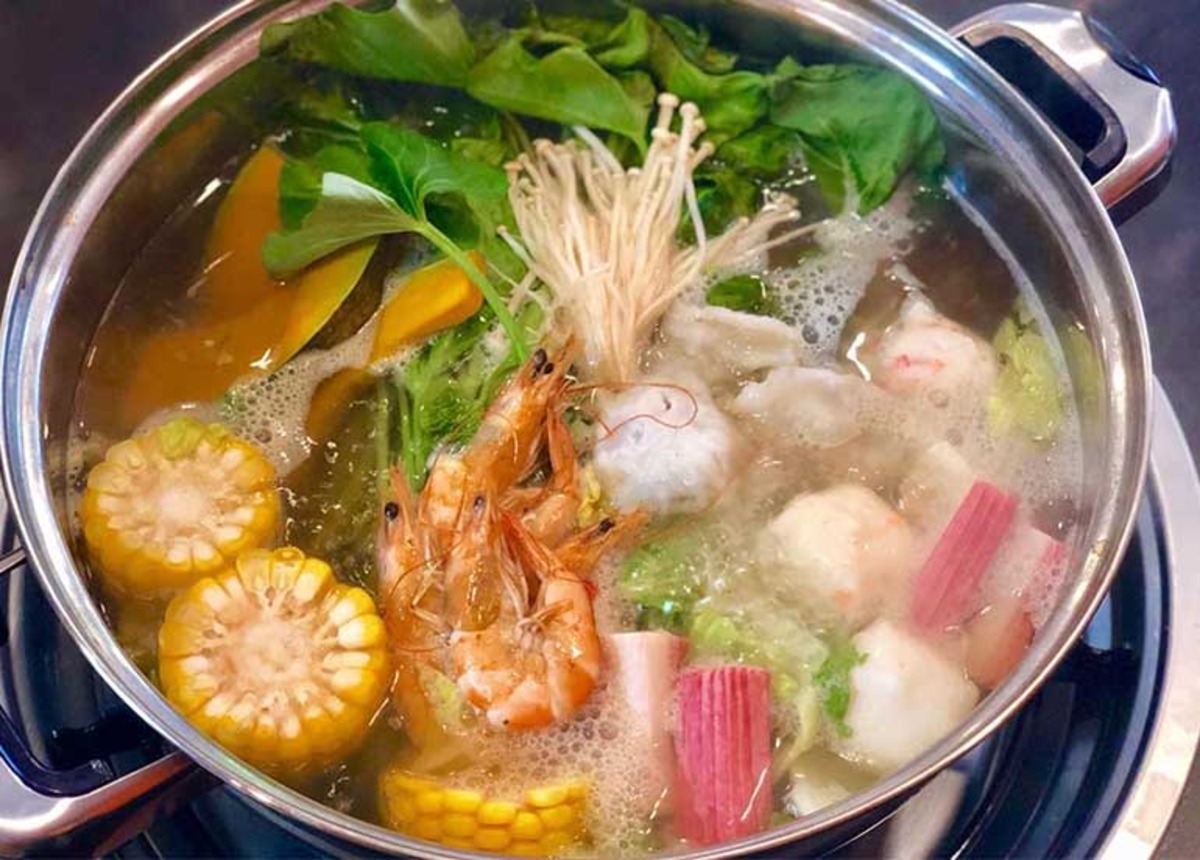
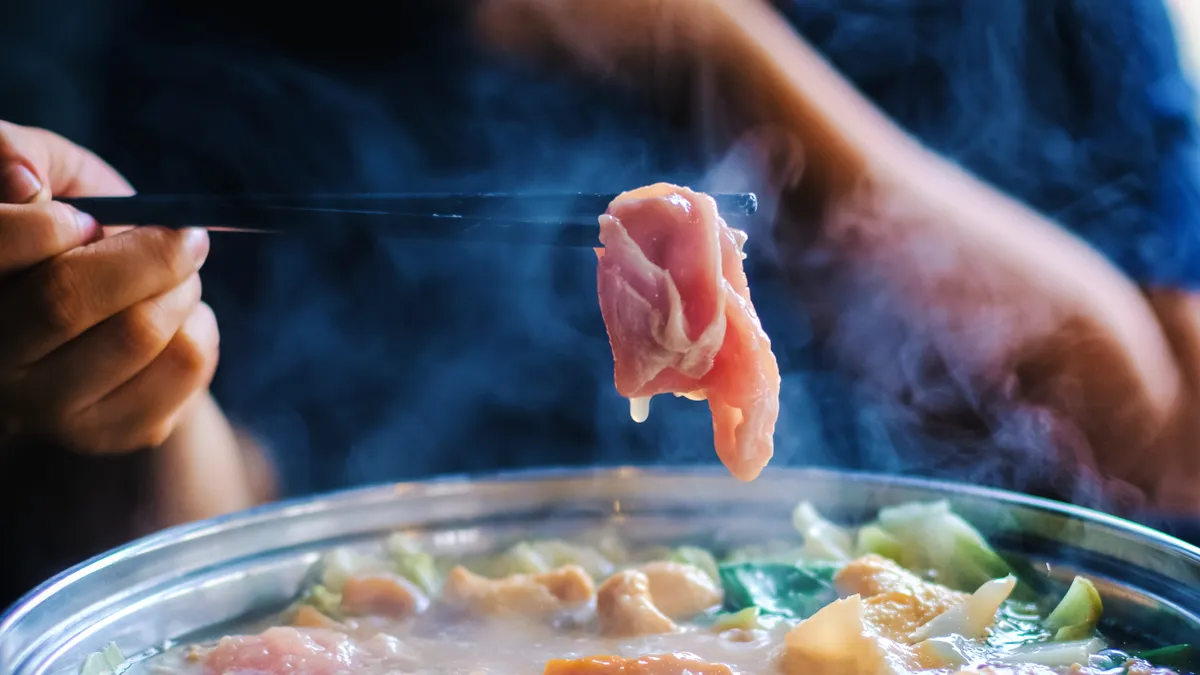
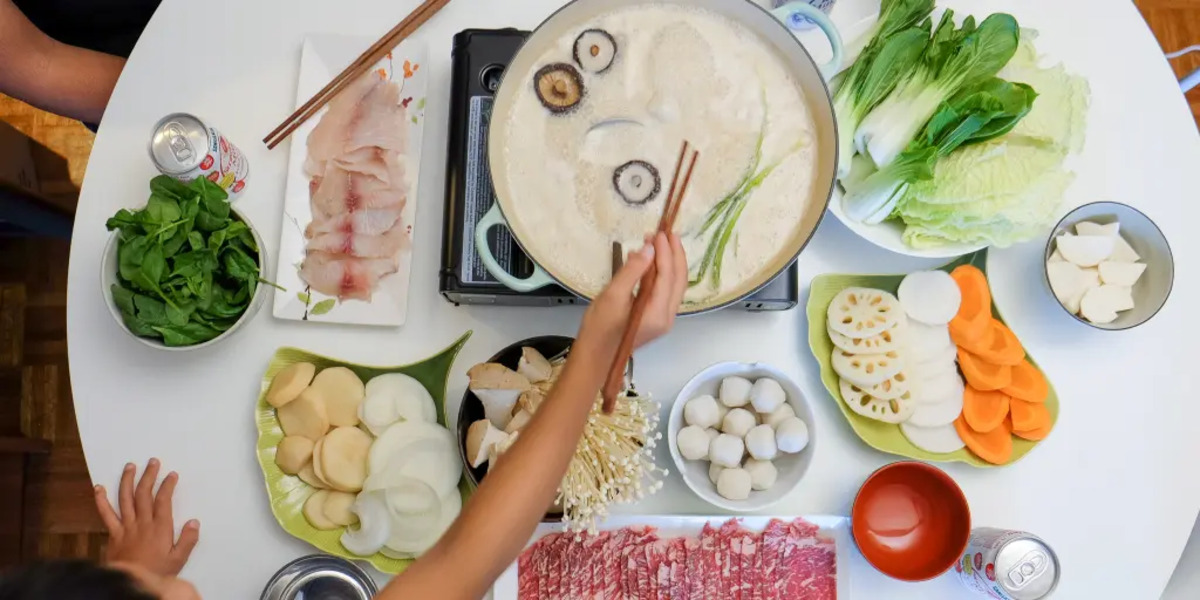
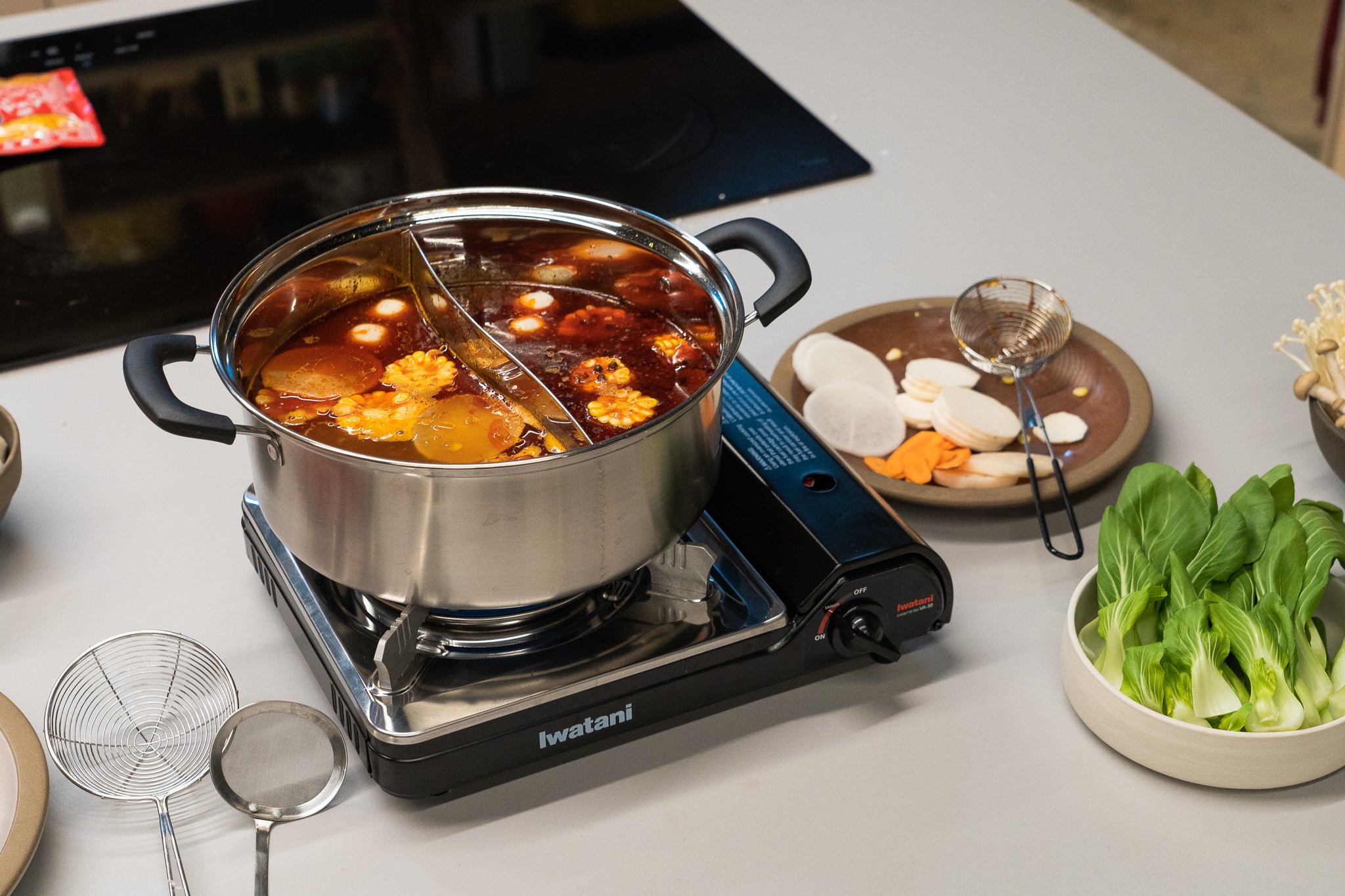

0 thoughts on “What Is Dry Hot Pot”